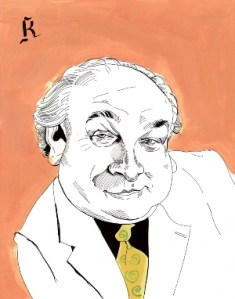Paramount Group’s Ralph DiRuggiero on How to Manage a LEED Certified Asset
By Daniel Edward Rosen March 16, 2012 8:30 am
reprintsRalph DiRuggiero, a vice president of property management for the Paramount Group, knows the added value of managing LEED-certified buildings. The real estate investment and management firm oversees a portfolio of 13 million square feet of Class A office space in New York City, San Francisco, and Washington, D.C., and in time, Mr. DiRuggiero says, it wants each office building to have a LEED Gold designation. He spoke to The Commercial Observer about the cost benefit of LEED, and why hammers won’t help convince a tenant to go green.

The Commercial Observer: What was one of the first buildings in Paramount’s portfolio to adopt a green policy?
Mr. DiRuggiero: I think the first property that received a LEED designation was 900 Third Avenue. That building has a basic LEED, and now we are in a program to move up to a Gold designation.
In Washington, when we redeveloped 425 I Street, we received a LEED Gold designation for the core shell. The reason why we didn’t get it for the interior yet is because the building, we leased it up to a government agency and their build-out is LEED certified.
What we are doing across our portfolio is we have our LEED campaign on, and we intend by the end of 2012 to have LEED designations in all of our buildings, no matter which of the cities they are in.
We have an average Energy Star score of 77. The interesting part of that is the national average is only 50, so we are 27 points above the national average. It takes a great deal of work, but it is one of the steps to get a LEED designation.
How do you deal with those tenants who don’t want to fall in line with certain green mandates in the building?
If somebody has a real objection, we’ll negotiate with them. Obviously we can’t force people to do everything that we want. But with good programs and setting a good example and working with them, we can put together the right cooperative effort. I won’t say we ever used a hammer, because we won’t and we can’t. But we talk out the issues.
What have been the cost benefits of going LEED?
Going back over the last couple of years, our energy usage from 2009 to 2011 has reduced quite a bit by over 5 percent. Our steam usage is down over the same period [by] 7 percent, and we have just driven [down] a lot of CO2 and cleaned up the carbon footprint pretty well, I think.
If you translate those numbers I gave you into savings, we’ve saved over close to $7 million in electrical costs, half-a-million in steam costs, and if you were to take those savings and figure out what the value enhancement factor of them would be, we’ve really increased the value of our properties, at the same time we reduced operating costs.
Equipment has to be replaced. Instead of just replacing [equipment] with the same old stuff, we are adding energy-saving equipment that benefits the building. We’re adding valuable frequency drives, we are doing roofs that are more energy efficient. Lights in lobbies and in public areas burn out all the time. But we are doing much more high-efficiency lighting, which is reducing the costs and actually giving us better light. There is an awful lot of things you can do just in the normal course of business that will result in an environmentally sound operation.
What is the eventual goal? Do you want all your buildings to achieve the highest LEED score?
As a matter of course, we’ve said we want to achieve LEED Gold. There will be some buildings that will achieve LEED Platinum. To be honest, I’m afraid there may be one or two that will just get the LEED designation, initially. That’s fine, because even with that we’ve reached our first step and then we’ll be able to move on to our second step.


